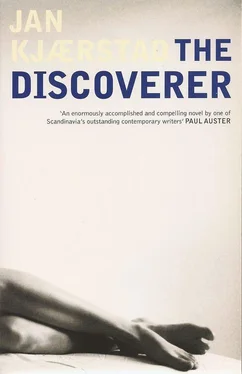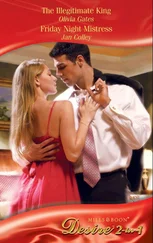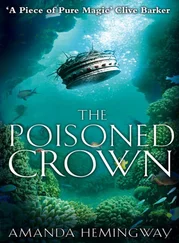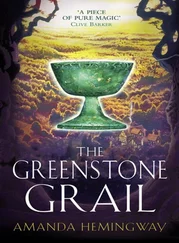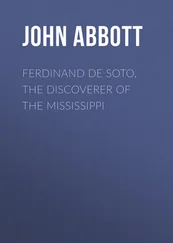Jan Kjaerstad - The Discoverer
Здесь есть возможность читать онлайн «Jan Kjaerstad - The Discoverer» весь текст электронной книги совершенно бесплатно (целиком полную версию без сокращений). В некоторых случаях можно слушать аудио, скачать через торрент в формате fb2 и присутствует краткое содержание. Год выпуска: 2009, Издательство: Arcadia Books, Жанр: Современная проза, на английском языке. Описание произведения, (предисловие) а так же отзывы посетителей доступны на портале библиотеки ЛибКат.
- Название:The Discoverer
- Автор:
- Издательство:Arcadia Books
- Жанр:
- Год:2009
- ISBN:нет данных
- Рейтинг книги:5 / 5. Голосов: 1
-
Избранное:Добавить в избранное
- Отзывы:
-
Ваша оценка:
- 100
- 1
- 2
- 3
- 4
- 5
The Discoverer: краткое содержание, описание и аннотация
Предлагаем к чтению аннотацию, описание, краткое содержание или предисловие (зависит от того, что написал сам автор книги «The Discoverer»). Если вы не нашли необходимую информацию о книге — напишите в комментариях, мы постараемся отыскать её.
The Discoverer — читать онлайн бесплатно полную книгу (весь текст) целиком
Ниже представлен текст книги, разбитый по страницам. Система сохранения места последней прочитанной страницы, позволяет с удобством читать онлайн бесплатно книгу «The Discoverer», без необходимости каждый раз заново искать на чём Вы остановились. Поставьте закладку, и сможете в любой момент перейти на страницу, на которой закончили чтение.
Интервал:
Закладка:
‘I’m really sorry, but I had to reach up on tiptoe,’ he said.
‘Silly boy,’ she said. ‘You always have to reach up on tiptoe to get at the right books.’ She glanced cheerfully at the volumes that had crashed to the floor as he tried to pull out Stendahl’s De l’Amour . ‘But let this be a lesson to you,’ she said. ‘When you reach out for love you will soon discover that it is bound up with everything else.’
Jonas, on the other hand, was thinking to himself: I’d bet anything there’s a secret chamber behind these bookshelves too. And there was. A veritable palace. One day Karen Mohr would take him there.
‘Come on, we can sort this out later,’ she said, pointing to the mess on the floor. She could tell from his face that he had had enough for one day. ‘It’s time for a ham omelette.’
Karen Mohr’s bedroom, her secret forest, reinforced Jonas’s belief that beyond this world another one lay waiting for him. That the world was not flat. He was still skipping regularly in the basement, in the dark, spinning thought after thought, layers of thoughts, above and below, behind and in front of one another, pursuing, or trying to pursue as many as possible at one time. He skipped and he skipped, but he had still not made any kind of a breakthrough . He had a suspicion that this would only happen if he were to succeed in weaving all of those simultaneous thoughts, at all those different levels, together in his mind, if he could get them to intercommunicate even though, in terms of content and substance, they were all very different. Because that was the really fascinating part: discovering the links between reflections which were worlds apart, which apparently had nothing in common. Was it possible to get these thoughts to chime in unison, like on an organ where the manuals and the stops gave you command, as it were, over several smaller and very different organs, each with its own individual character and unique tone. Jonas had seen how, when his father played, he coupled the Principal to the pedals and the Swell — deep in the background, so to speak — with the Choir to the fore; had heard how, in so doing, he produced the most wonderful sound, in which all the minor parts, all the voices from so many different directions, blended together to produce the most divine music. It might be that his trains of thought could also be regarded as strings of notes, as melodies which he had to weave into concords. Occasionally, if he was lucky, Jonas would hear his thoughts singing inside him, like a choir, exquisite wordless harmonies. And sometimes, if he went on doing doubles for long enough, until he was almost hovering in the darkness of the basement, he felt as though his whole body had turned into an organ.
It was also largely thanks to this sort of approach that, as a grown man, having taken up skipping again, he was able to resolve the problems surrounding his programme on Svend Foyn. Many of the episodes in the Thinking Big series had something of the character of a discovery about them, but with the programme on Foyn one felt more like an inventor, or rather: felt as though one had a front-row seat inside the mind of an inventor. Jonas Wergeland made a programme about Svend Foyn’s moment of revelation, a few seconds which, on television, lasted for forty-five minutes. When viewers got up, their armpits damp from excitement, and looked at the clock, they could not believe the time.
The programme opened with a shot being fired from a cannon in the bows of a whaler and it ended with a bomb-tipped harpoon slamming into the side of a whale — hardly anyone spotted that the latter scene had been filmed on an underwater set. And presented between the shot and the strike were Svend Foyn’s thoughts, his speculations on how to catch a whale, with Wergeland switching every now and again from this to a brief flash of the harpoon — the spearhead of his thoughts, as it were — flying through the air towards the back of the whale in the sea, in much the same way as, in more recent films, we can follow the flight of missiles or Robin Hood’s arrows. By using trick photography Wergeland made it look as though the camera was fixed to the projectile, an illusion so effective that viewers felt almost as though they were being sucked into the picture.
But as I say, what really made the programme was not the special effects, but the way in which Jonas Wergeland succeeded in reflecting a thought process, one which actually continued, with much trial and error, for some years, but which Wergeland condensed into one compact burst of effort. As the outer framework to this one had Svend Foyn — actor Normann Vaage received a great many compliments for his snowy mane and magnificent white beard — slumped pensively in a deckchair on a deserted beach, gazing out to sea. To either side of him were other deckchairs, all empty. The wind made their fabric billow out like sails.
Jonas Wergeland started with images, which is to say with the line of thought which illustrated the first part of what was a multifaceted problem: the question of whether the whale was a good commercial prospect; in other words: Foyn’s reflections on contracts and markets, on how a new industry of this nature should be organised and which products were likely to be the most attractive — oil, for example, and whalebone. The other question which had to be considered, was that of the boat — huge, fast-swimming whales could not be caught from rowboats. This train of thought gave rise to a series of shots, concluding with a scene showing Foyn’s introduction of the steam engine to whaling; he had figured out that what he needed was a small, powerful steamship with good manoeuvrability — the prototype was christened Spes & Fides. This was followed by another reflection, a fresh problem, with Jonas Wergeland continually cutting to shots from the first two lines of thought. The third problem, the trickiest of them all, concerned the harpoon itself, since there was no way, either, that such massive and immensely strong creatures could ever be caught with hand-held harpoons. In this lay the programme’s greatest challenge — to depict the experiments which led to Foyn’s greatest invention, the bomb harpoon: the development of the right sort of explosives and detonators for the right harpoons; the discovery that explosive device and harpoon would need to be combined in the same projectile. And finally, or more correctly, interwoven with the three other visual threads, came the scenes in which television viewers were at long last introduced to the target: the whales, colossi such as the humpback whale, the fin whale and the blue whale, as yet unconquered by man, creatures which did not die easy, but which, when they did, sank. Svend Foyn had spent a lot of time sailing the Arctic Ocean and had invaluable experience of the nature and behaviour of the whale. This made, as one might expect, for some captivating scenes, footage which had been bought-in — there is nothing quite like the sight of a whale, that exotic creature, swimming in the ocean, surfacing, spouting. And then there was the soundtrack, recordings of so-called whale-song played in the background throughout the programme, communicating non-stop with the subconscious. Once or twice, when a number of whales sang out at the same time, Jonas raised their singing into the foreground, this euphonious, enigmatic music forming an accompaniment to Foyn’s branching lines of thought. And apropos this last: as a child, crawling into the organ casing and seeing all the pipes that surrounded him, Jonas had often made believe that he was inside the belly of a whale.
Jonas Wergeland presented the progression of these four main thought processes by showing Svend Foyn sitting in more and more deckchairs until at last — just before all of his thoughts intertwined to give one solution — there were four Svend Foyns, or Foyn quadruplets, sitting side by side on the beach looking out to sea and the waves rolling to shore. Foyn, or the Foyn quads, thought of the whale’s progress through the sea, the whale’s speed and power, the whale’s need to breathe, considered how long the whale stayed on the surface each time it came up; Foyn wrestled with financial forecasts, pondered the question of whale oil and all the uses to be found for whalebone, from corset stays to fishing rods, contemplated the matter of oil residue, and wondered whether the guano could be used as fertiliser; Foyn thought about the boat, about the size of the boat, its manoeuvrability, its crew; and above all Foyn applied his mind to the subject of the whaling tackle: what the line should be like, how many barbs the harpoon should have, how the bomb tip should be constructed, whether it ought to explode when it hit the target or seconds later; he considered the blending of the gunpowder, the fuse, his work with Esmark, the country parson and gifted chemist and the lessons he had learned from previous, unsuccessful, attempts by others: all of them had come up with a piece of the puzzle, but only he, Foyn, would succeed in fitting all the pieces together in his head.
Читать дальшеИнтервал:
Закладка:
Похожие книги на «The Discoverer»
Представляем Вашему вниманию похожие книги на «The Discoverer» списком для выбора. Мы отобрали схожую по названию и смыслу литературу в надежде предоставить читателям больше вариантов отыскать новые, интересные, ещё непрочитанные произведения.
Обсуждение, отзывы о книге «The Discoverer» и просто собственные мнения читателей. Оставьте ваши комментарии, напишите, что Вы думаете о произведении, его смысле или главных героях. Укажите что конкретно понравилось, а что нет, и почему Вы так считаете.
